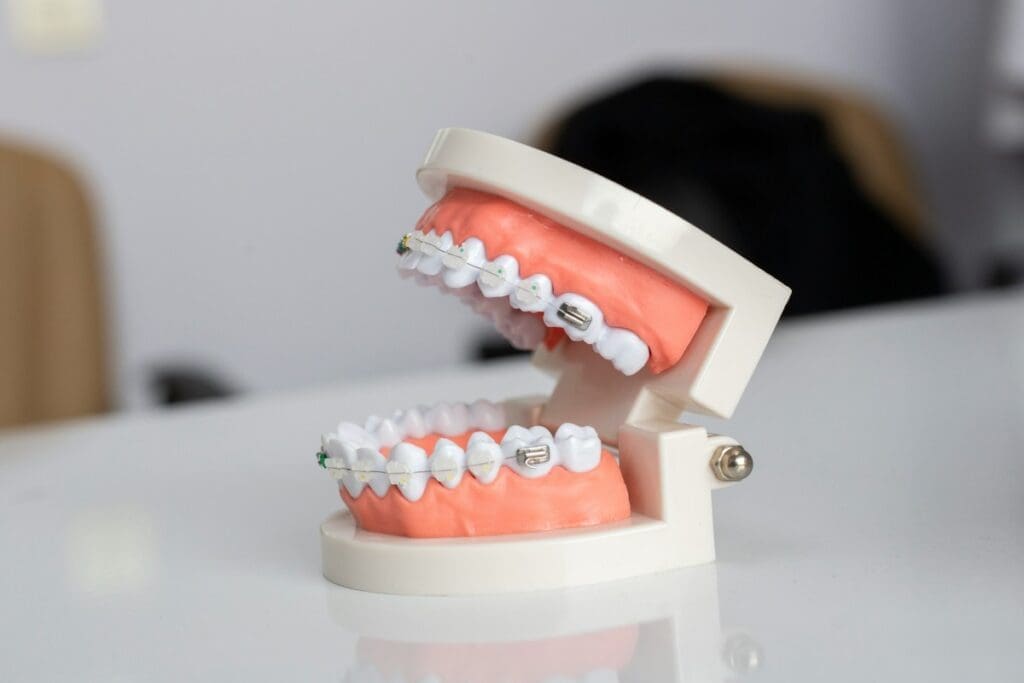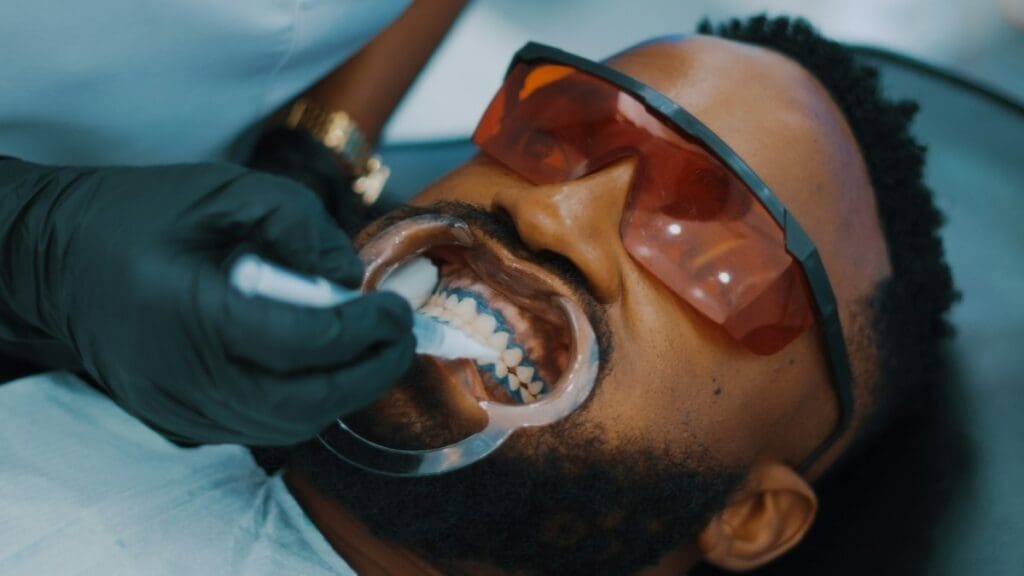Many parents begin asking when their children will need braces when their child is still very young. Most kids get braces between the ages of 9 and 14, with orthodontic evaluations recommended around age seven.
This period is ideal because the head and mouth are still growing, making it easier to move teeth into the desired position. Teenagers and adults can also achieve excellent results with braces or other orthodontic treatments.
The role of baby teeth is crucial in determining the timing for braces, as they guide the development of adult teeth. The ideal timing for getting braces during the early teenage years is advantageous because the head and mouth are still growing, making it easier to adjust and shift teeth into proper alignment. Monitoring a child’s teeth as they grow is essential to identify the right time for orthodontic care.
Why Do Kids Need Braces for Baby Teeth?
Often the person who wears braces assumes it’s purely vanity. Braces are essential not only for cosmetic reasons but also to correct crooked teeth, which can improve overall oral health. What happens to children without braces?
Braces have many benefits for the health and wellness of our oral health. In addition to crooked or missing teeth braces are also necessary for children who exhibit one or more of the following symptoms or experiences: This listing is not exhaustive however. Visit The Super Dentists.
How Long Do Kids Wear Braces?
The timing for getting braces often coincides with the early teenage years because the head and mouth are still growing, making it easier to shift teeth. Braces are used to correct crooked teeth for both cosmetic and oral health reasons.
Treatment typically lasts 18-30 months, with adjustments every 4-8 weeks. Post-braces, retainers are worn for several months to two years, and some choose permanent retainers to maintain alignment and prevent shifting. There are various types of braces and treatment plans available to suit different needs.
Will Braces Hurt?
Each time your child visits the orthodontist, the interconnecting wire is tightened to apply gentle pressure on the brackets, gradually shifting teeth or jaws into alignment. This may cause mild, brief soreness after each visit.
As adult teeth erupt, they can cause temporary discomfort as they straighten. In some cases, teeth may need to be extracted to make room for proper alignment, particularly if overcrowding occurs. This ensures there’s adequate space for teeth being shifted and for correct jaw alignment.
Is it Too Late to Get Braces at 18?
It’s never too late to get braces. Orthodontic treatment can be effective at any age, whether you’re 18 or older. While the ideal time for braces is during the early teenage years, many adults successfully undergo orthodontic treatment to achieve a healthier, more attractive smile.

Benefits of Getting Braces for Teenager or Adult Teeth
- Improved Oral Health: Correcting misaligned teeth can make it easier to maintain good oral hygiene, reducing the risk of cavities and gum disease.
- Enhanced Aesthetics: Braces can significantly improve the appearance of your smile, boosting your confidence and self-esteem.
- Modern Options: Adults have access to discreet options like clear aligners and ceramic braces, which are less noticeable than traditional metal braces.
Challenges of Getting Braces as an Adult for Permanent Teeth
- Longer Treatment Time: Adult bones are denser and less malleable than those of children, which can result in a longer treatment period.
- Compliance: Adults may need to be more diligent with their orthodontic care, as busy schedules can make it harder to attend regular appointments and maintain proper care.
- Cost: Orthodontic treatment can be expensive, and insurance coverage for adult braces is often limited. However, many orthodontists offer payment plans to help manage the cost.
How Do I Know if My Child Needs Braces?
Although most kids have a primary tooth, there are indications in a child’s teeth that they may require braces. As your child’s teeth become thin and your adult teeth are beginning to erode, look for the following signs to indicate orthodontic treatment needs.
Tooth decay early on can result in abnormal growth in the adult teeth. Genetic factors can be very important for dental development too: a person or close relatives that needs orthodontic treatment or has badly misaligned teeth needs orthodontic therapy.
There are several signs that may indicate your child needs braces. Look for issues such as:
- Crooked Teeth: Teeth that are visibly misaligned or crowded can benefit from orthodontic treatment.
- Bite Issues: If your child has an overbite, underbite, or crossbite, braces may help correct these problems.
- Difficulty Chewing or Speaking: Trouble chewing food properly or difficulty with certain sounds can signal alignment issues.
Importance of Regular Dental Check-Ups
Regular dental check-ups are crucial for identifying potential orthodontic issues early. Your child’s dentist can monitor the development of their teeth and jaw, and recommend an orthodontic evaluation if necessary. Early detection allows for more effective treatment and can prevent more severe problems in the future.
Referrals to Orthodontists
If your dentist notices any alignment issues, they will refer you to an orthodontist. The orthodontist will conduct a comprehensive evaluation to determine if braces are needed and develop a personalized treatment plan.
This collaborative approach ensures your child receives the best care possible, setting them up for a healthy, beautiful smile.
Can Adults Get Braces Too?
Braces are not just for kids and teenagers; adults can benefit from orthodontic treatment as well. Orthodontic issues like misaligned teeth and bite problems can be addressed at any age, improving both function and appearance.

Options for Adult Orthodontic Treatment
- Traditional Metal Braces: Effective for a wide range of orthodontic issues, though more noticeable.
- Ceramic Braces: These braces work like metal ones but use tooth-colored brackets, making them less noticeable.
- Lingual Braces: Placed on the back of the teeth, hidden from view.
- Clear Aligners: Transparent, removable trays (such as Invisalign) that gradually move teeth into their desired position. They are popular among adults due to their discreet appearance and convenience.
Modern Alternatives
Clear aligners and ceramic braces are particularly appealing to adults who prefer a less noticeable option. Clear aligners are custom-made trays that are virtually invisible and can be removed for eating and cleaning.
Ceramic braces blend with your natural tooth color, offering a more aesthetically pleasing alternative to metal braces.
What Factors Determine When to Get Braces?
- Dental Health The overall health of your teeth and gums plays a crucial role in deciding when to get braces. Conditions like cavities or gum disease need to be addressed before starting braces.
- Bite Issues Bite problems such as overbites, underbites, crossbites, and open bites can significantly impact oral health and functionality. These issues often necessitate orthodontic intervention to correct alignment and improve bite efficiency.
- Jaw Alignment Jaw alignment issues can affect both appearance and function. Misaligned jaws can lead to problems with chewing, speaking, and even breathing. Braces can help realign the jaws, improving overall oral health and function.
- Personal Preference Personal preference and aesthetic goals also influence the decision to get braces. Some individuals may choose to start treatment earlier for cosmetic reasons, while others may delay it until they feel more comfortable with the process.
- Consulting with an Orthodontist The most important step is consulting with an orthodontist. They can assess all these factors and recommend the best timing and treatment plan for braces. A professional evaluation ensures that you or your child receives the most effective and appropriate care for your specific needs.
By considering these factors and seeking professional advice, you can make an informed decision about when to start orthodontic treatment, ensuring the best possible outcome for your smile and oral health.
